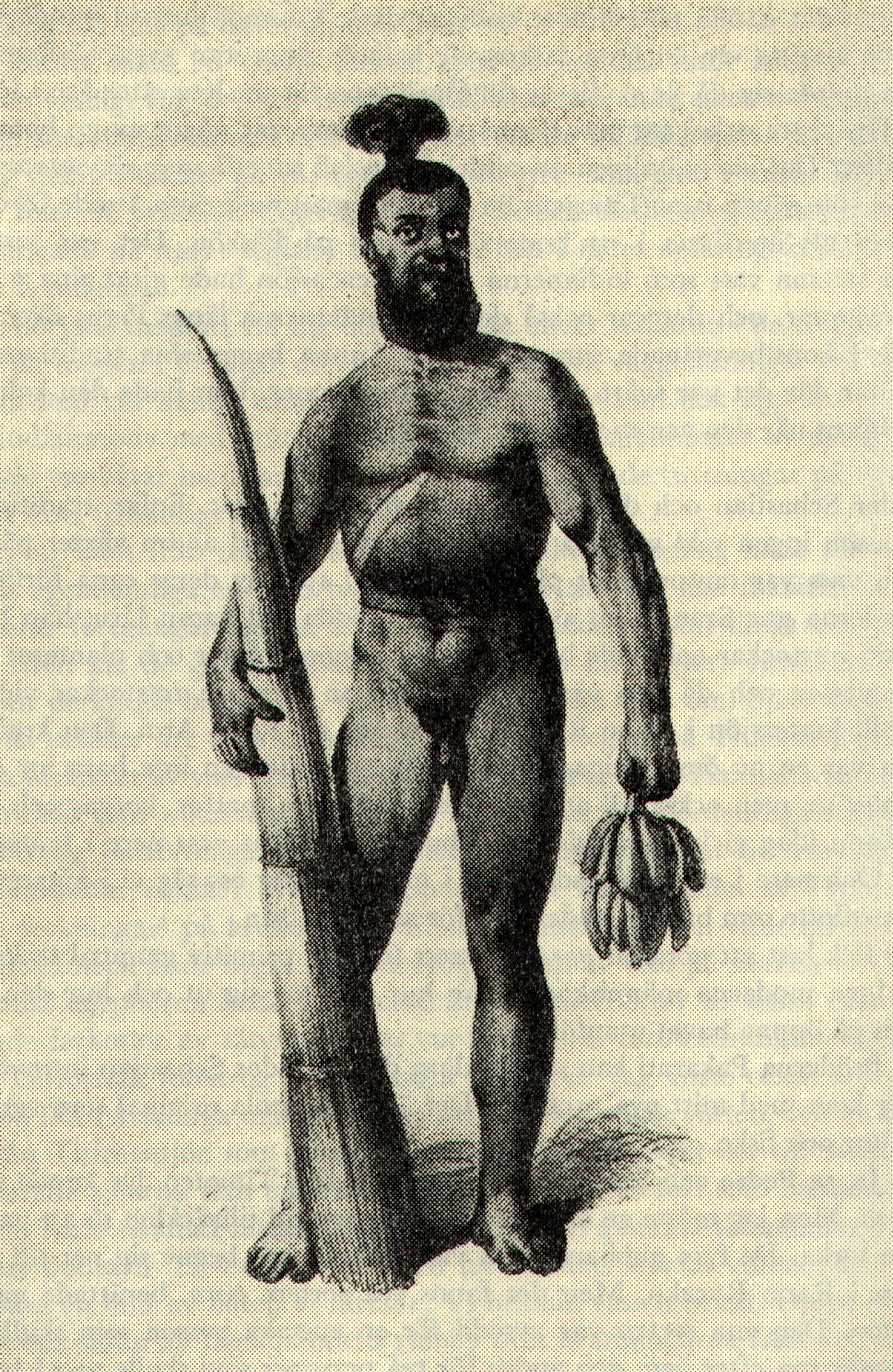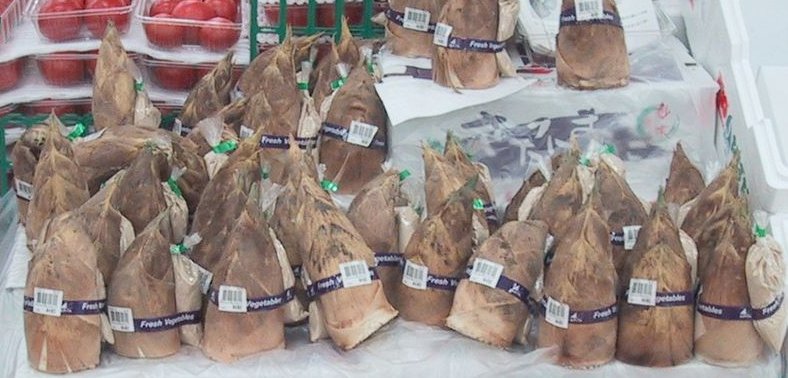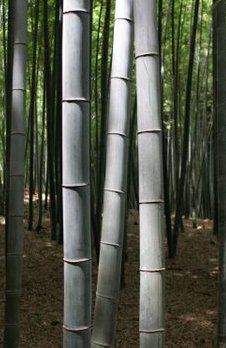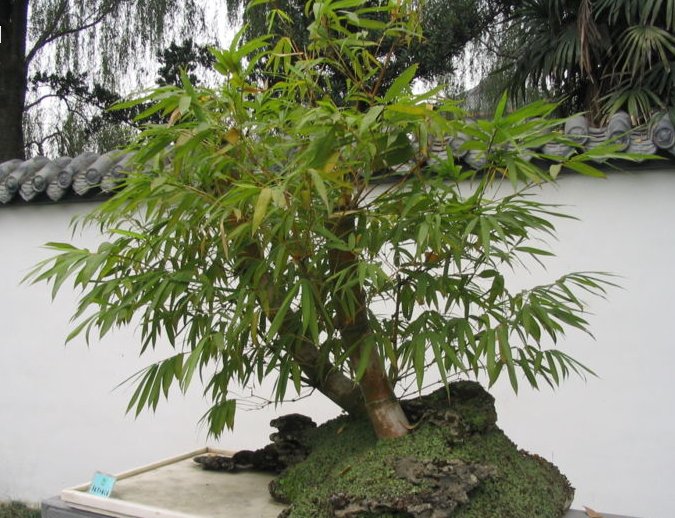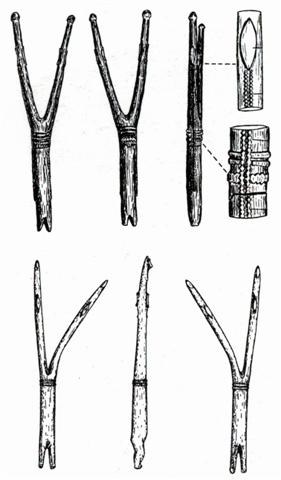"Established bamboo will send up shoots that generally grow to their full height in a single season, making it the fastest growing woody plant. Several subtropical bamboo species can grow 30 cm (1 foot) per day, with some species having been documented as growing over 100 cm in one day ..." (Internet)
|
TRANSLATIONS
Metoro's word for henua in Aa1-43 is 'raaraa'. I cannot identify that word, but possibly he made a joke (yoke) involving rara and Raá:
Here we must note 'raa toa' for 'noon'. The signs of tôa in Aa1-26 and Aa1-30 suddenly takes on an additional meaning. A yoke between Raá and rara may have been there already before Metoro was born: "... The chief thus makes his appearance at Lakeba from the sea, as a stranger to the land. Disembarking at the capital village of Tubou, he is led first to the chiefly house (vale levu) and next day to the central ceremonial ground (raaraa) of the island. At both stages of this progression, the pretender is led along a path of barkcloth by local chieftains of the land. In Lau, this barkcloth is prescriptively a type considered foreign by origin, Tongan barkcloth ..." (Islands of History) The 'path of barkcloth' reminds us about the tapa (barkcloth) in tapa mea. To translate Metoro's raaraa as 'the central ceremonial ground' is reasonable, because at midnight we should be at the Rapa Nui version of Ming Thang: "... It is indeed 'the king standing in a gateway' and Soothill (5), p. 62, makes the suggestion that it refers to the emperor's station on the threshold between one room of the Ming Thang [Bright Palace, 'the mystical temple-dwelling which the emperor was supposed to frequent, carrying out the rites appropriate to the seasons'] and another when an intercalary month intervened in the normal cycle of his perambulation." Caution must rule, however. There are many words similar to rara and Raá in the Rapanui and Tahitian languages. The Stranger King arrives from the sea, of course by canoe, and a canoe we indeed find in the 1st (double) period after midnight:
The ship of Captain Cook was considered a kind of floating island, i.e. henua: "4 March 1779. The British ships are again at Kaua'i, their last days in the islands, some thirteen months since their initial visit. A number of Hawaiian men come on board and under the direction of their women, who remain alongside in the canoes, the men deposit navel cords of newborn children in cracks of the ships' decks (Beaglehole 1967:1225).8) 8) For an analogous behavior observed by the missionary Fison on the Polynesian island of Rotuma, see Frazer (1911, 1:184). Hawaiians are connected to ancestors (auumakua), as well as to living kinsmen and descendants, by several cords emanating from various parts of the body but alike called piko, 'umbilical cord'. In this connection, Mrs. Pukui discusses the incident at Kaua'i: I have seen many old people with small containers for the umbilical cords... One grandmother took the cords of her four grandchildren and dropped them into Alenuihaha channel. 'I want my granddaughters to travel across the sea!' she told me. Mrs. Pukui believes that the story of women hiding their babies' pikos in Captain Cook's ship is probably true. Cook was first thought to be the god Lono, and his ship his 'floating island'. What woman wouldn't want her baby's piko there?" (Pukui et al. 1972, 1:184)" (Islands of History) The floating habitation of the sun god may be what Aa1-45 illustrates. Interestingly the canoe type of glyph is like a tapa mea without feather signs.
Perhaps, therefore, tapa mea should be interpreted as the canoe of the sun god as it is delivers rays from above (and the canoe type of glyph as the canoe of the sun when below the horizon). Considering that henua also means 'uterus' and 'placenta' (henua o te poki),
there may be a similarity between the canoe of the sun and the Ark of Noah. The progeny is transported safely across the deep waters, after which the boat is stranded on a mountain top, letting all the live stock spread across the newborn 'earth' (probably spring / a.m.). "stock A. trunk, stem ... B. supporting structure; frame of timber for punishment ... C. hollow receptacle ... D. massive portion of an instrument ... E. line of descent ... F. part of hose ... G. fund, store ... H. object of contemptuous treatment ... I. stiff neckcloth ... " (English Etymology) The tree trunk is a symbol for the origin of all the rest of the 'tree', a stiff store of life. Maybe the canoe of the sun (e.g. in Aa1-45) is built from reeds. Not only were the Easter Islanders' pora constructed with reeds, but also Moses arrived at the watery edge where reeds grew (as I remember it).
(drawing by du Petit-Thouars according to Heyerdahl) The new day does not begin at dawn but at midnight. But at midnight the world is still in the 'water' and a boat is needed.
Once again a yoke: pora - poraa (which should indicate that we are on the right track). That formerly they used pora to swim to Motu Nui may also be a confirmatory sign, because the three islets should be understood as the beginning of the solar path. Reeds are hollow and live in or near the water. They are similar to bamboos.
The kohe plant is located in the fourth column of Barthel's table, i.e. it is useful as a receptacle:
According to my guess about the structural similarity between the 7 days of the week and this table, with kohe we arrive at Tuesday (the day of Mars, the red planet who travels as in a canoe across the sky).
Curiously the name of Tuesday is given as po e rua by Churchill. But also we in the west are confused as to where the week should begin, with Sunday or with Monday. I guess the chief god was Sun in some cultures and Moon in other; the chief should always be in front. I have also a faint memory about Noah being a symbol for the moon, not the sun, because the old man was said to be limping (i.e. not walking as fast as he should, thereby slowly being more and more late - like the moon which rises later and later in the east for every day). But, probably, on Easter Island sun should come first (male), and that is confirmed by the week calendars in H and P which begin with Sunday. Therefore po e rua should instead be interpreted as the double 'day', the idea being that Mars has two faces - one close up and one far away. Bamboo shots are somewhat similar to the reed pora:
Furthermore, the ropes around the pora remind us about the nodes on the bamboo stems:
(both pictures from Internet) "The twelve months of the tropical year (chhi, a very meteorological conception) were divided into twenty-four fortnights, of which twelve were 'chhi-centres' (chung chhi) and twelve were 'chhi-nodes' (chieh chhi - the analogy being with the nodes of a bamboo)." (Needham 3) In Babylonia they told that Marduk had vanquished Tiamat (the ocean) by cutting through her in the middle: "Marduk, die Frühsonne des Tages und des Jahres, wurde eben wegen dieses seines Charakters der Lichtbringer am Weltmorgen. Marduk, der die leblose, chaotische Nacht, die keine Gestaltungen erkennen lässt, besiegt, der den Winter mit seinem Wasserfluten, den Feind des Naturlebens, überwindet, wurde der Schöpfer des Lebens und der Bewegung, der Ordner des Regellosen, der Gestalter des Unförmlichen am Weltmorgen." "Die Sonne, die des Morgens das Weltmeer durchschreitet und besiegt und das Licht bringt, lässt aus dem Chaos der Nacht zuerst den Himmel, dann erst die Erde hervortreten, spaltet das gestaltlose Reich der Nacht in die zwei Hälften, den Himmel und die Erde." I guess that means we should consider the midnight division between the 'days' as the slashing of Tiamat into two halves (the cut being like a node dividing a 'chhi-centre'). Marduk was the god not only of light but also of growth. Light from the sun and growth are connected. Therefore it is interesting to find that both bamboos and reeds are characterized by strong growth:
(bamboo bonzai - picture from Internet) "It [the Common Reed] ... forms extensive stands, up to a square kilometre or more (known as reedbeds); where conditions are suitable, it can spread at up to 5 m or more per year by horizontal 'runner' stems, which put down roots at regular intervals. The erect stems grow to 2–6 m tall, with the taller plants growing in areas with hot summers and fertile growing conditions. The leaves are broad for a grass, 20–50 cm long and 2–3 cm broad. The flowers are produced in a dense, dark purple panicle 20–50 cm long." (Internet)
I remember the sun reed boat like a 'fish', according to Heyerdahl: "The image is that of a reed boat with a whale's or sea monster's head at the bow, and a skull-like mask at the stern. At the top of the stern is a five-sided umu, or Easter Island fireplace, and on deck is a hare paenga, or lenticular reed house, with a square doorway on the starboard side. On the same side, a wide channel surrounded by a V-shaped groove leads down from the deck aft."  The 'fish' probably means the watery dark region of the 'night' and here the 'fish' is associated with reeds both in the boat and in the boat-shaped house on top of the fish. The top of the stern should mean 'midnight' and the house in front of the umu the night before that. The end of the fish is at 'midnight'. Totora reed mats were used to enwrap their precious objects (such as rongorongo boards). Reeds were used to preserve 'life' - as when mummies were enwrapped in mats. The Maya and Aztec indians 20-day calendar had reed (Ben / Aj respectively Acatl) as number 13.
That grass is immediately preceding and jaguar (the big head-crushing night cat) immediately following seems as it should be. Furthermore, the year 1 Reed we remember: "... But what is surprising indeed was the manner of Quetzalcoatl's actual return. The priests and astrologers did not know in what cycle he was to reappear; however, the name of the year within the cycle had been predicted, of old, by Quetzalcoatl himself. Its sign was 'One Reed' (Ce Acatl), which, in the Mexican calendar, is a year that occurs only once in every cycle of fifty-two. But the year when Cortes arrived, with his company of fair-faced companions and his standard, the cross, was precisely the year 'One Reed'. The myth of the dead and resurrected god had circumnavigated the globe." (Campbell) The three remaining glyphs Aa1-46--48 in the 2nd part of the night have a similar structure:
This structure is somewhat like that in Aa1-39
but the 'appendix' starts from a lower point on tôa. Furthermore, the angle of the 'elbow' is not so sharp as in Aa1-39. In the three glyphs we may instead have an 'arm' more like that at noon (in Aa1-24) connecting elbow and new sun:
I therefore guess that what is meant in Aa1-46-48 is 'birth'. Maybe the 'arm' is an 'umbilical cord' (pito): "... Hawaiians are connected to ancestors (auumakua), as well as to living kinsmen and descendants, by several cords emanating from various parts of the body but alike called piko, 'umbilical cord' ..." The tôa are then the ancestors and at the end of the pito we find their progeny (poki). The three poki could be 'pillar' (toko), sky (ragi) and land (henua).
Although I have imagined that the such 'heads' as that at the end of the 'appendix' of Aa1-46 was meant to signify the sun (the 'head' being the sun disc), I am no longer of that opinion. Because in Aa1-22
and similar glyphs I have recognized instead the upper part of the toko type of glyph (GD32):
The distance is short between Aa1-46 and those 'morning' glyphs which are arriving later (along the 'circular' path of the sun) and which describe the lifting up of the sky by way of toko. The birth of toko must happen before first the sky and then the earth are illuminated: "Die Sonne, die des Morgens das Weltmeer durchschreitet und besiegt und das Licht bringt, lässt aus dem Chaos der Nacht zuerst den Himmel, dann erst die Erde hervortreten, spaltet das gestaltlose Reich der Nacht in die zwei Hälften, den Himmel und die Erde." From this we deduce that the raised hand (with thumb) in some way must signify the earth:
The three fingers probably means 'light'. The thumb perhaps is there to avoid misreading the sign as 'eating'. An open hand with three fingers and thumb oriented outwards we saw in e.g. Aa1-30
the last glyph before the 'death' of the sun. Its opposite (the sign oriented oppositely) should then mean 'birth'. Yoking these two ideas, we arrive at theconclusion that the 'open three-fingered hand with thumb' means 'light'. It is not the sun who 'dies' in Aa1-30, but the light from the sun. It is not the sun who is 'born' in Aa1-48, but the light from the sun. Arguing further, the birth of toko and ragi and light must take place in the dark (during the night), because only after light has been born will there be light. The moon shape usually seen in the ragi type of glyph is therefore meant to signify the night sky. Contemplating what Metoro might have meant with his words, we find no great mystery with the last two glyphs:
But Aa1-46 is more difficult:
We have here two problems to try to solve: 1. The word hokohuki - what does it mean? 2. And ika no te tagata - what does he mean by that? These two unkonwns (like x and y) are difficult to come to grips with based on one statement only. We need more statements. And we have indeed more statements as regards hokohuki, because that word was used by Metoro also during the day:
Metoro used the word hokohuki also during the day and hokohuki then was used in place of tapa mea. The tentative ideas about what hokohuki meant there, based on the meaning of the words huki and hoko:
was that 'the fundamental part of hokohuki is huki, some kind of vertical post it seems'. As to hoko we might now guess at 'companion' as a reasonable translation here, i.e. 'in a group of' - a 'number prefix'. Hokohuki would then be something like 'yet another' (tapa mea respectively tôa). It seems as if hoko is a number prefix for 'persons', but then 'small sticks which close up the ridge' (huki) should be regarded as 'persons'. This idea we have meat earlier: "The tree trunk is a symbol for the origin of all the rest of the 'tree', a stiff store of life." The ancestors are like trees and their progeny (poki) like small sticks. There may be a type of yokes which we haven't observed before, poki becomes piko if we invert the two syllables. Progeny are associated with umbilical cords. We should from now on watch for these inversions when trying to understand the meanings of the Rapanui words. We can now understand why toko has a head:
Being a kind of wooden post it must be like a person. Metoro's words ma te hokohuki - e ika no te tagata may perhaps therefore be interpreted as 'with a companion stick - a fish person', where 'fish' signifies that we are in the night. But in spite of being in the night we notice the signal: 6 (for sun) in Aa1-46 (because that glyph is located in the 6th of the 8 night periods). Metoro seems to have been sensitive to what 'companion' ought to mean: In the female night (the moon) the companion must be male (the sun). As a confirmation we find the signals 4 and 7 (for moon / earth) in Aa1-23 and Aa1-29 (because these glyphs are located in the 4th and 7th day periods). Van Tilburg has written about a kind of forked stick 'persons' in Mangareva:
"For the best-documented esoteric meaning of the Y-shape we must look to Mangareva, where 'forked stick' wands and 'stick man' effigies called eketea were used in mortuary, fertility and initiation rituals conducted by priests (taura) at which rogorogo and wood craftsmen participated. These interesting objects were highly abstract depictions of the human form which had legs and feet indicated and carved decorative bands around the midpoint. One example has oval 'eyes' carved on each of the two parallel parts forming the upright forks. In Mangaia, the forms of the 'forked sticks' erected on marae during the initiation of the Temporal Lord are not known. It is very clear however, that erecting these 'forked sticks' represented the visible commitment of the individual district chiefs to act as toko (prop or support) to the Temporal Lord as he undertook his duties." The Y-shapes in tôa could have a similar meaning: To support a 'roof' (lord above) the shape of Y is a natural choice for the sticks - the 'beam' above will be secured.
The word eketea clearly could be split up into eke - tea. Then we have: 'climb aboard' / 'transport (by boat) in the water' / 'mount the fish to the surface' - to bring up the light. |
||||||||||||||||||||||||||||||||||||||||||||||||||||||||||||||||||||||||||||||||||||||||||||||||||||||||||||||||||||||||||||||||||||||||||||||||||||||||||||||||||



